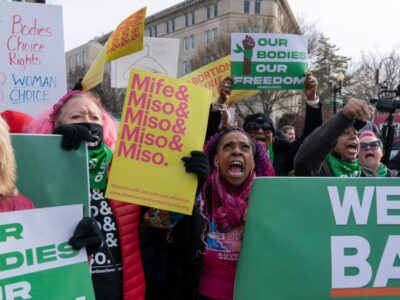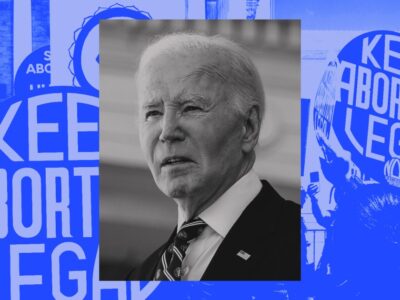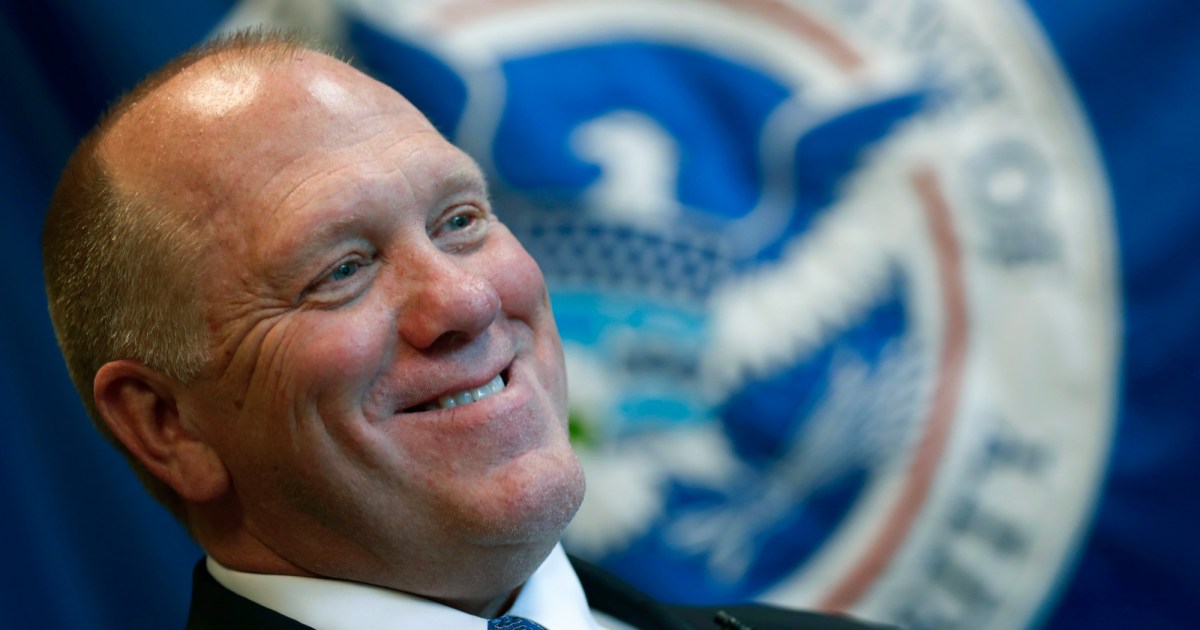
One in every 10 pregnancies in the US ends in a miscarriage, a common medical event for which there are safe and effective treatments should there be complications. But over the past two years, having a miscarriage in many states has become far more dangerous, thanks in part to the Supreme Court’s 2022 Dobbs decision overturning Roe v Wade.
Thirteen states have passed total abortion bans. Three others ban abortion after six weeks—a de facto ban. These laws have resulted in a rash of horror stories—not about the anticipated illegal backroom abortion deaths, but about ordinary women having ordinary but occasionally life-threatening pregnancy complications, while hospitals and doctors refuse to treat them for fear of being prosecuted.
Reporters and lawyers have chronicled stories of miscarrying women nearly dying from blood loss and infection, suffering debilitating injuries, and future infertility because of delayed care. One Texas hospital, the AP reported, even left a woman to miscarry in the ER restroom because the staff refused to treat her. Her husband had to call 911 from the ER for help.
Among the legion of GOP anti-abortion politicians in the US who’ve helped create this carnage, there is one you might expect to have some sympathy for the suffering of these women: Vice presidential candidate and Ohio Sen. JD Vance. On the surface, the politician who denigrated Democrats as the party of “childless cat ladies” and suggested that “the whole purpose of the postmenopausal female, in theory,” was to take care of children, would not be an obvious softie for the victims of policies that have left women bleeding out in hospital restrooms. And yet, he might understand the situation better than many of his Republican colleagues.
Vance owes much of his fame and political career to his bestselling 2016 memoir, Hillbilly Elegy, a coming-of-age story about his triumph over family dysfunction, addiction, absent fathers, and cycles of abuse.
The memoir’s beating heart is Bonnie Blanton Vance, or “Mamaw,” the maternal grandmother Vance called his “guardian angel” in his July acceptance speech at the Republican National Convention. Blanton helped raise the future Yale Law School grad when his drug-addicted mother could not, saving him from becoming just another entry in a long family history of shiftless angry men.
In Hillbilly Elegy, Vance holds Blanton up as the force of nature behind his successes. But the book also suggests she may be an unintended case study of something quite different: the importance of reproductive health care for everyone. In his memoir, Vance says that his beloved grandmother suffered eight miscarriages over 10 years, plus four pregnancies that came to term. Today, many of the women suffering from denied miscarriages and abortion care “have similar life stories to his grandmother,” says Debra Stulberg, a professor of family medicine at the University of Chicago who studies miscarriage care.
The word “abortion” never appears in Hillbilly Elegy, and Vance doesn’t seem to have ever spoken publicly about the particular chapter of his grandmother’s difficult life. (A spokesperson for Vance did not respond to questions for this story by publication.) But his grandmother’s story, which helped make him famous, seems to underly Vance’s intense opposition to abortion—one that’s even more extreme than the man he shares the GOP ticket with.
In 2023, Vance signed on to a letter to the secretary of the US Department of Health and Human Services, along with 29 other Republican lawmakers, urging the agency to reverse a new rule that bars law enforcement officers from accessing patients’ reproductive healthcare records, particularly those trying to prosecute women for crossing state lines for abortion care. “Abortion is not health care,” the letter said. “It is a brutal act that destroys the life of an unborn child and hurts women.”
Vance supports a national abortion ban, and he doesn’t believe in exceptions for rape and incest. “Two wrongs don’t make a right,” he said in an interview during his 2022 Ohio Senate campaign. “It’s not whether a woman should be forced to bring a child to term, it’s whether a child should be allowed to live, even though the circumstances of that child’s birth are somehow inconvenient or a problem to the society.”
“It’s not whether a woman should be forced to bring a child to term, it’s whether a child should be allowed to live, even though the circumstances of that child’s birth are somehow inconvenient or a problem to the society.”
Vance’s position is a curious one for someone whose origin story begins with the pregnancy of a 13-year-old girl.
In his memoir, Vance writes that his grandfather, Jim Vance, and his grandmother’s best friend, Bonnie Smith, were lovers. At some point, he writes, 16-year-old Jim cheated on Bonnie Smith with 13-year-old Bonnie Blanton. The “affair” resulted in a pregnancy that prompted the couple to flee Appalachian Kentucky for Dayton, Ohio, to escape Blanton’s murderously protective brothers.
Today, Blanton’s first pregnancy would be considered the result of statutory rape in many states, and a felony carrying prison time. The pregnancy was also exceedingly dangerous. “Teen pregnancies, especially 15 and under, are by definition high risk,” says Stulberg. Perhaps no surprise, then, that Blanton’s baby died a week after she was born.
It seems clear from Hillbilly Elegy that Blanton’s unplanned pregnancy at 13 was a singular catastrophic event that trapped her in a violent marriage for decades. “Mamaw never spent a day in high school,” Vance writes. “She’d given birth to and buried a child before she could legally drive a car.” Her husband was an abusive alcoholic; Blanton famously once tried to set him on fire when he had passed out drunk on the couch.
Yet Vance seems to view Mamaw’s adolescent pregnancy not as a catastrophe but as the catalyst that launched his family out of Hatfield and McCoy territory and into suburban Ohio, where there were more opportunities. “Mamaw’s entire life—and the trajectory of our family—may have changed for a baby who lived only six days,” he writes. Blanton died in 2005, at the age of 72, when Vance was only 20 and still in the Marines. As a result, “We don’t get to hear her take on this story,” Stulberg says. “That could be very different from his.”
Having a baby at 13 may have set in motion Vance’s path to the vice president’s office. But it also may have set up Blanton for the years of fertility issues Vance describes in his memoir. According to him, she had eight miscarriages in the decade between the live birth of an uncle in 1951 and the birth of his mother in 1961. But in his book, Vance displays a striking lack of curiosity about the details of those miscarriages, other than to speculate that they may have been triggered by the stress of being married to an abusive alcoholic.
Without Blanton around to fill in the details, such as how far along in her pregnancies she was when she miscarried, we can only speculate. But experts I spoke with found it highly unlikely that a woman who’d had eight miscarriages, plus four pregnancies, the first at 13, would not at some point have needed either a therapeutic abortion or the sort of miscarriage treatment that Vance’s preferred reproductive health policies now make difficult to obtain in many states.
Having a history of multiple pregnancies itself is a risk factor, Stulberg notes. “The risks of preterm labor and postpartum hemorrhage are higher,” she says. Preterm labor is a common reason for miscarriage management, including what is essentially the abortion of a nonviable fetus.
“Politicians may say very easily that there’s no reason why miscarriage should be affected by these [abortion bans],” says Daniel Grossman, an OB-GYN at the University of California, San Francisco, and head of a research program that has been tracking the state of reproductive health care since the overturning of Roe. “But in fact, the treatments that are done for miscarriage are almost identical to the treatments for abortion, including the abortion pill.”
“The treatments that are done for miscarriage are almost identical to the treatments for abortion, including the abortion pill.”
Grossman recently co-authored a study that compiled accounts from dozens of clinicians who had observed the horrific treatment of pregnant women in need of medical care that they were either denied or forced to obtain at great expense because of strict state abortion bans, often with great trauma.
Consider this account from a clinician in a state with an abortion ban, describing what happened to a woman who was 19 to 20 weeks pregnant. When she arrived at the ER, doctors found that the amniotic sac was protruding through her cervix—evidence of a doomed pregnancy. But they sent her home. The next day, she showed up at the ER in the immense pain of advanced labor.
Anesthesiologists refused to provide her an epidural for pain because they believed it “could be considered [a crime] under the new law,” the clinician reported. Instead, they gave her some IV morphine as she labored for several more hours to deliver a dead fetus. “I overheard the primary provider say to a nurse that so much as offering a helping hand to a patient getting onto the gurney while in the throes of a miscarriage could be construed as ‘aiding and abetting an abortion,’” the horrified clinician reported. “Best not to so much as touch the patient who is miscarrying.”
Even before Roe v. Wade, doctors didn’t treat pregnant patients like this, says Mary Ziegler, a law professor at the University of California Davis who studies the history of abortion care in the United States. Back then, doctors were given more deference to decide when a woman’s life was in danger. She says even in 1946, when Blanton first got pregnant, a family doctor would likely have been able to quietly perform an abortion on a 13-year-old without running afoul of the authorities. Indeed, it was exactly these sorts of child pregnancies that led to legal reforms that created exceptions to anti-abortion laws in the first place, she says.
Today, however, 10 states now have abortion bans with no exceptions for rape or incest, and six have no exceptions for the health of patients, even if they’re children. Politicians like Vance “don’t see exceptions [to abortion bans] as being necessary to address tragedies,” Ziegler says. “They see them as loopholes.”
For Stulberg, Vance may be misreading his grandmother’s story. She says research shows that women who want abortions but can’t get them fare much more poorly than women who do. But they also manage to survive, as Vance’s grandmother did. “It’s almost like women’s resilience protects society from seeing the harm,” she says. “To be that educated,” Stulberg says of Vance, and to have his life experience, and “then choose to support these policies is not caring that women are going to die.”
Women just like his grandmother.
Update, October 1: After this story published, Taylor Van Kirk, a spokeswoman for Vance, sent this comment: “Throughout his campaign for U.S. Senate and during his time in office, Senator Vance has consistently made clear that he supports reasonable exceptions for rape, incest, and life of the mother. Senator Vance has also stated repeatedly that he agrees with President Trump on abortion policy being set at the state level, not the federal level, and like President Trump, he agrees that we need to find common ground on this issue. As a senator, he has not supported any legislation which would impose a federal abortion ban.”















